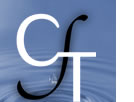 |
||||||||||
Teaching Problem Solving
Tips and Techniques
Communicate
-
Have students identify specific problems, difficulties, or confusions. Don't waste time working through problems that students already understand.
-
If students are unable to articulate their concerns, determine where they are having trouble by asking them to identify the specific concepts or principles associated with the problem.
-
Make students articulate their problem solving process.
-
In a one-on-one tutoring session, ask the student to work his/her problem out loud. This slows down the thinking process, making it more accurate and allowing you to access understanding.
-
When working with larger groups you can ask students to provide a written "two-column solution." Have students write up their solution to a problem by putting all their calculations in one column and all of their reasoning (in complete sentences) in the other column. This helps them to think critically about their own problem solving and helps you to more easily identify where they may be having problems.
Two-Column Solution (Math)
Two-Column Solution (Physics)
-
Encourage Independence
-
Model the problem solving process rather than just giving students the answer. As you work through the problem, consider how a novice might struggle with the concepts and make your thinking clear
-
Have students work through problems on their own. Ask directing questions or give helpful suggestions, but provide only minimal assistance and only when needed to overcome obstacles.
-
Don't fear group work! Students can frequently help each other, and talking about a problem helps them think more critically about the steps needed to solve the problem. Additionally, group work helps students realize that problems often have multiple solution strategies, some that might be more effective than others
Be sensitive
- Frequently, when working problems, students are unsure of themselves. This lack of confidence may hamper their learning. It is important to recognize this when students come to us for help, and to give each student some feeling of mastery. Do this by providing positive reinforcement to let students know when they have mastered a new concept or skill.
Encourage Thoroughness and Patience
- Try to communicate that the process is more important than the answer so that the student learns that it is OK to not have an instant solution. This is learned through your acceptance of his/her pace of doing things, through your refusal to let anxiety pressure you into giving the right answer, and through your example of problem solving through a step-by step process.
Expert vs. Novice Problem Solvers
Experts (teachers) in a particular field are often so fluent in solving problems from that field that they can find it difficult to articulate the problem solving principles and strategies they use to novices (students) in their field because these principles and strategies are second nature to the expert. To teach students problem solving skills, a teacher should be aware of principles and strategies of good problem solving in his or her discipline.
The mathematician George Polya captured the problem solving principles and strategies he used in his discipline in the book How to Solve It: A New Aspect of Mathematical Method (Princeton University Press, 1957). The book includes a summary of Polya's problem solving heuristic as well as advice on the teaching of problem solving.
"The teacher should put himself in the student's place, he should see the student's case, he should try to understand what is going on in the student's mind, and ask a question or indicate a step that could have occurred to the student himself." -- George Polya, How to Solve It |
Novices in a particular field typically have not yet developed effective problem solving principles and strategies. Helping students identify their own problem solving errors is part of helping them develop effective problem solving skills. Beverly Black and Elizabeth Axelson's list of common problem solving errors, adapted from Arthur Whimbey and Jack Lochhead's book Problem Solving and Comprehension (Lawrence Erlbaum, 1999), provides useful insight into the mindset of a novice problem solver.
HOME | ABOUT CFT | PROGRAMS | SERVICES | RESOURCES
Center for Teaching |
General Questions? Web Site Questions? Copyright ©2009 |
